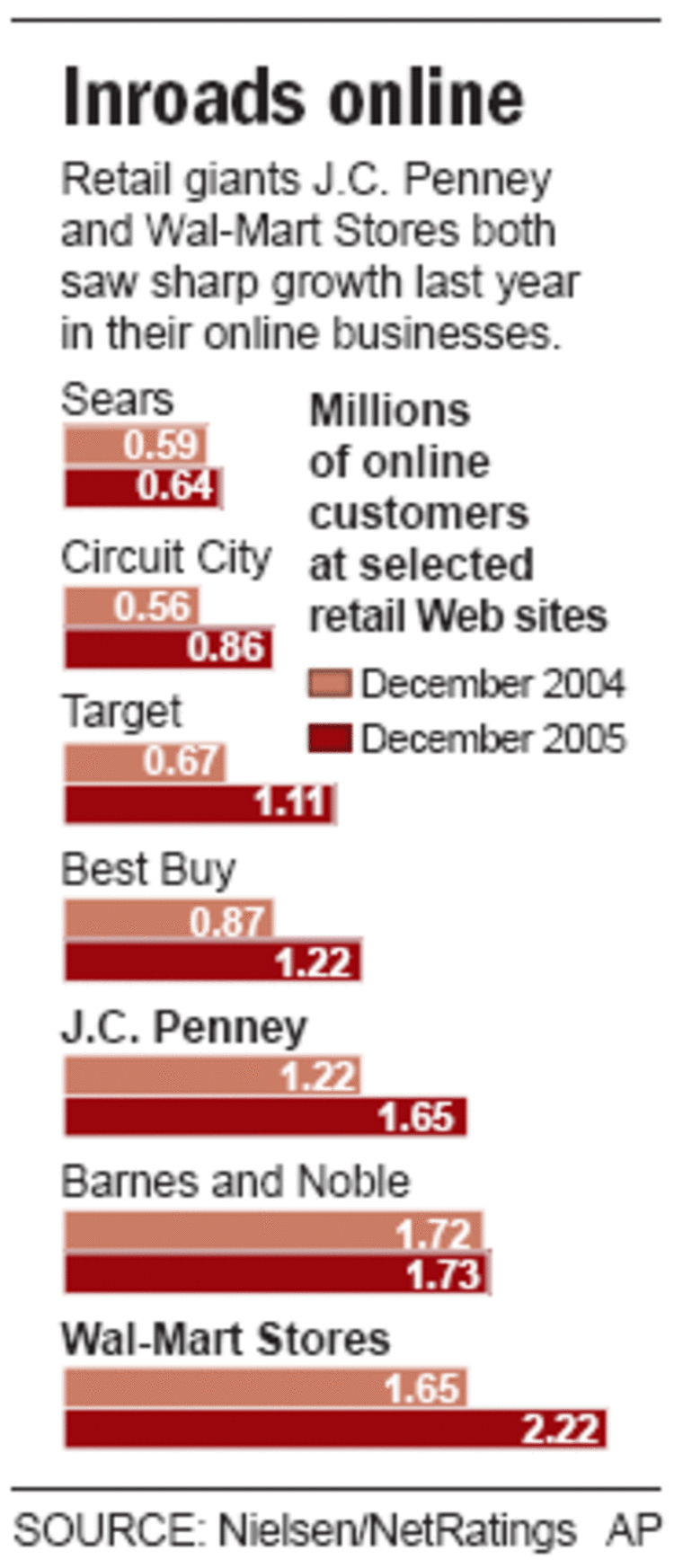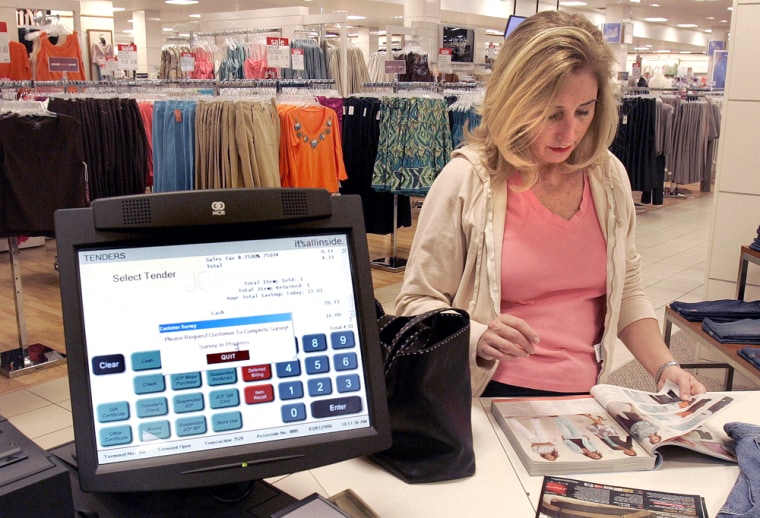J.C. Penney Co. may have steered through a turnaround, but there are shoppers like Janice Bernache who still think of the store as a place where “mother used to shop.”
But as the 27-year-old Manhattan resident peered through the retailer’s temporary showcase store in Times Square, she was pleasantly surprised.
“It looks really young,” said Bernache, eying bikinis, metallic skirts and men’s slim jeans.
The three-level showroom — which showcases the retailer’s store brands in home furnishings and fashions — allows customers to shop at any one of 22 Internet kiosks. The store, open through March 26, is part of an ambitious campaign to convert trendier, more affluent shoppers like Bernache into Penney’s fans.
The Plano, Tex.-based department store is using its online business not only to drive store traffic, but also as a key tool to polish its image among new customers, many of whom still think of the chain as dowdy. With 50 percent of America’s households not having shopped at Penney in the past three years, executives see a lot of untapped opportunity.

“We are excited about the turnaround, but we know we are not reaching all of our customers,” said John Irvin, head of J.C. Penney Direct, which comprises its catalog and Internet businesses. “We think our message needs to get out not only to our existing customers, but to the new customers.”
The retailer views its online site as the “hub” of its overall business, which generated sales of $18.8 billion last year. Penney passed the billion dollar mark in online sales in its recent fiscal year, surpassing e-commerce sites from discounters and department stores like Wal-Mart Stores Inc.
Online shoppers tend to be more affluent and younger that the store shopper. The median age for Penney’s online customers is 45 years old, compared to 49 for its store shopper and over 50 for its catalog customer, said Tim Lyons, a company spokesman. He noted that the median household income of the online shopper is 10 percent to 15 percent higher than that of the store and catalog shopper, whose income ranges from $35,000 to $80,000.
Penney’s online site offers pricier items that are not available in the store.
Penney’s turnaround began in late 2000, when the then Chief Executive Allen Questrom launched an effort to upgrade stores and merchandise. He sold off the Eckerd drug chain, closed underperforming department stores and spruced up the remaining Penney’s stores.
In its fourth quarter, Penney reported a 65 percent profit increase over the same period last year and posted its 11th consecutive quarterly gain in same-store sales, considered the best indicator of a retailer’s health.
Chairman and Chief Executive Myron E. “Mike” Ullman III, who joined in late 2004 from Macy’s and the luxury-goods business, is trying to position Penney as more upscale and upgrade its collection of store-label brands. The labels, which include names like fashion designer Nicole Miller and home furnishing maven Chris Madden, account for 40 percent of sales.
Customers will see more changes in the stores and online as Penney further blends both businesses.
“Penney’s is moving fast into this new frontier of multichannel consumer retail experience,” said Richard Hastings, retail analyst at Bernard Sands. “People are experiencing the brand in a dynamic way.”
Penney is adding touch screens to its cash registers which allow sales staff to order online for customers who couldn’t find what they were looking for at the store. The screens are in of its 1,000 stores; the rollout is expected to be complete by year-end.
The retailer is also testing Internet kiosks as well as monitors in a selected number of stores that show looks that can be found only on the Internet, according to Ken Hicks, president. The Web site now allows customers to search for fashions according to their lifestyle, from trendy to traditional. Shoppers can also click on streaming video of Penney’s new ads — which launched on Sunday’s Academy Awards broadcast — to buy any of the featured fashions.
With 250,000 different items on line, the site offers a deeper selection in such categories as maternity wear, children’s furniture and big and tall clothing. In children’s furniture, for example, a typical Penney’s store only offers six choices of children’s beds; online, customers can find over 100 choices.
“Penney’s is definitely at the forefront of adopting all this new type of technology,” said Heather Dougherty, an analyst at Nielsen/NetRatings, an Internet research firm.
Meanwhile, Wal-Mart — which expects to post a 40 percent increase in the number of visits to its site this year over last year — is making some big strides too. The world’s largest retailer, which does not break down its online sales figures, is always evaluating such technology as Internet kiosks and touch screen monitors at cash registers, said Raul Vazquez, vice president of marketing at walmart.com.
At Penney, a big challenge ahead is to get store associates to actively pitch to shoppers all three ways to shop. At a Penney store in Queens, N.Y., placards throughout the store encouraged customers to check out offerings online and in the catalog. But when a reporter approached a salesman in the furniture area about children’s furniture, he just replied: “We don’t sell them.”
It was only after being pressed a few times that he did encourage the shopper to check online.
